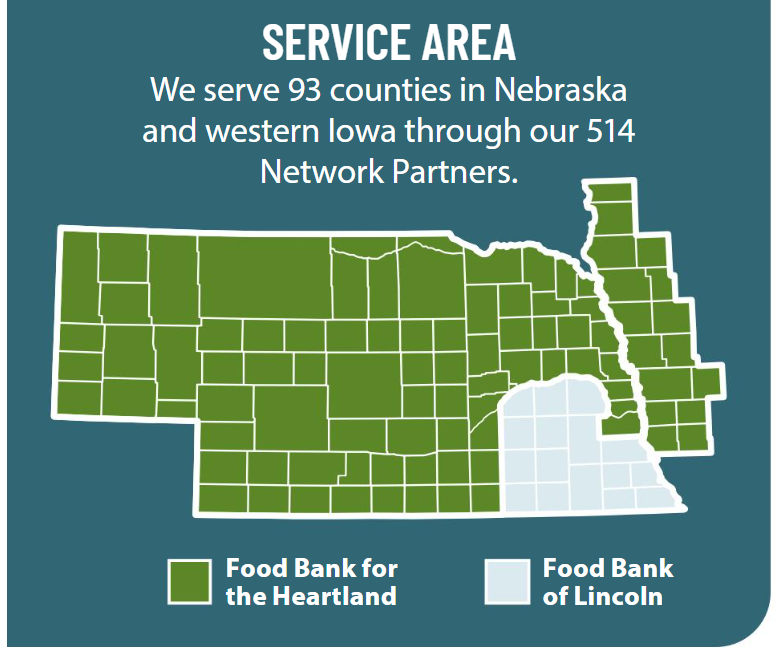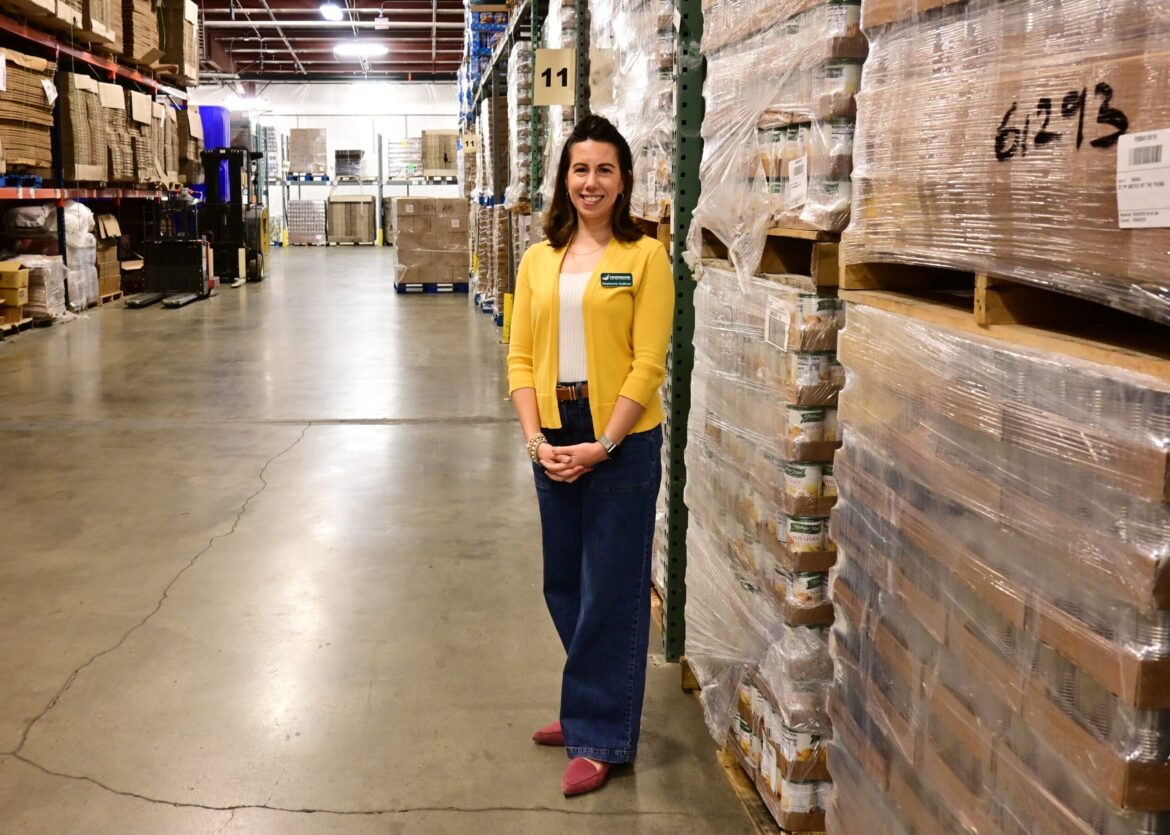Twenty-five thousand pounds of eggs.
Thirty thousand pounds of pulled pork.
Nineteen thousand pounds of 2% milk.
And 434,000 lost meals.
In recent months, tens of thousands of pounds of expected food items never made it to the Food Bank for the Heartland in Omaha. The canceled deliveries are a repercussion of recent cuts to a federally funded food assistance program that dispersed domestically grown meat and produce to local communities.
The scaled-back program exacerbates a growing problem. While food insecurity and hunger spreads in Nebraska, federal aid shrinks, and local food bank leaders and advocacy groups are left with fewer tools to meet an urgent need.
Hunger in the Heartland
The Food Bank for the Heartland is in a crisis. Currently, one in seven individuals and one in five children within the nonprofit’s 93-county service area in Nebraska and western Iowa are facing hunger. Those are among the highest numbers the food bank has seen in its 44 years of operation, said spokesperson Stephanie Sullivan.
“I think people don’t fully grasp the dire need that we’re seeing right now,” Sullivan said.
 Food Bank for the Heartland
Food Bank for the Heartland
Years of inflation, high housing costs and recent federal rollbacks mean a growing number of people are experiencing food insecurity for the first time. The Omaha-based food bank was weathering the storm. Then came the cuts to The Emergency Food Assistance Program (TEFAP).
The USDA website describes the program as “strengthening the nation’s nutrition safety net and supporting American agriculture.” In 2024, TEFAP was allocated $461.5 million to purchase domestically grown foods and $80 million for administrative costs. Nearly $1 billion more was allocated through the Commodity Credit Corporation.
In April, the Trump Administration cut roughly $500 million from the program, halting planned food deliveries to food banks across the country. By May, the Food Bank for the Heartland was among dozens of distribution sites nationwide to miss deliveries.
An analysis by ProPublica found that 94 million pounds of food never reached food banks because of the administration’s cuts. Those cancellations included the healthiest and most expensive items received by local food distribution sites.
“Your produce, your protein, your dairy. Those are foods that we consider foods to encourage,” Sullivan said. “This cut food that was vital to everyday nutrition.”
In fiscal year 2025, 62% of all food that came into the Food for the Heartland warehouse was donated, 17% was purchased by the food bank, and the USDA contributed 21%.
Since last year, the Food Bank for the Heartland has seen a $2.78 million reduction in government support, and more cuts are looming. Changes to the Supplemental Nutrition Assistance Program (SNAP) will limit food access for thousands of Nebraskans.
The food bank has been “in crisis mode for almost seven years now,” Sullivan said.
There were the devastating floods of 2019, the pandemic, government shutdown, inflation, supply chain issues and now federal cuts.
“It is vital that we work together to find solutions to hunger, because we know that right now we’re not meeting the gap,” Sullivan said, “and there’s no way we can even try to meet the gap as we continue to experience challenges with federal funding cuts and reduction in support.”
What’s coming
Changes to SNAP qualifications began Monday. They include expanded work requirements for able-bodied adults between ages 18 and 64, and removed eligibility for refugees and those granted asylum.
Advocacy group Nebraska Appleseed estimates between 10,000 and 17,000 Nebraska residents will lose benefits or see their benefits reduced due to the changes.
The impact will be “huge,” said Eric Savaiano, food and nutrition access program manager with Nebraska Appleseed.
“About 98% of (SNAP benefits) are spent out in local grocery stores. So it’s going to have an economic impact,” Savaiano said. “The more clear and heartbreaking result is people are not going to have the food that they need when they need it, and that is something that’s going to be a challenge for them.”
The repercussions of these changes will be difficult to comprehend on a national scale. Earlier this year, the USDA terminated the Household Food Security Report, calling it “redundant, costly, politicized, and extraneous.”
As the cuts continue, the Food Bank for the Heartland is leaning on its neighbors.
Financial donations are the best way to support the food bank’s mission, and volunteers are the “backbone” of the operation, Sullivan said.
“We’ve seen the heartland community respond to crises before, and we can only hope that they can respond to that crisis again,” Sullivan said. “And right now, we are in a hunger crisis.”


Dining and Cooking